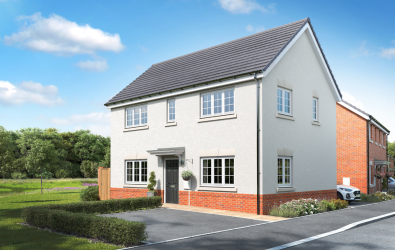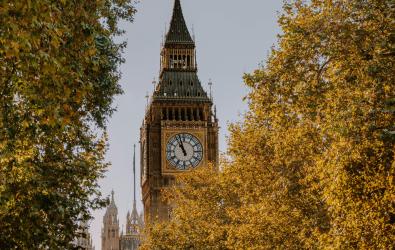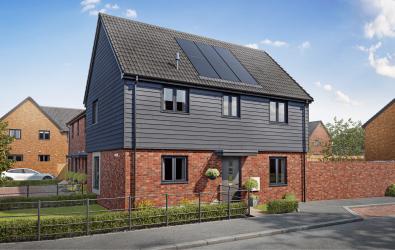One of the most important aspects to consider when buying a property in the UK is Stamp Duty. It’s a key element to consider during your financial planning and how much you pay can vary depending on your buyer status, location and what you intend to do with the property.
To add further confusion, the rules around Stamp Duty have changed several times over the last two years, mostly driven by the impact of the pandemic and the current financial situation on the housing market.
Below, we outline everything you need to know about UK Stamp Duty including the stamp duty rates, stamp duty changes and what you need to consider if you’re considering stamp duty on a second home.
What is Stamp Duty?
Stamp Duty Land Tax, often abbreviated to SDLT, is a compulsory payment paid on the purchase of property or land in either England or Northern Ireland. You are required to pay SDLT during the purchase process, regardless of what you’re planning to use the property for.
The specific times you pay Stamp Duty are when you:
- Buy a freehold property
- Buy a new or existing leasehold property
- Buy property through a scheme such as Shared Ownership
- Have property or land transferred to you in exchange for payment
The amount of Stamp Duty Land Tax that you pay is dependent on the value of the property and your individual buyer status. Stamp Duty is measured in thresholds, which dictate the percentage of Stamp Duty that you pay. We’ll examine the various thresholds below.
If you’re buying property in Scotland you pay the ‘Land and Buildings Transaction Tax’, while if you’re buying in Wales you pay the ‘Land Transaction Tax’.
How much is Stamp Duty?
The amount of Stamp Duty that you pay on a property purchase mostly depends on the value of the property that you’re buying, which determines which band you’re in, much like Income Tax.
There’s also the ‘threshold’, which is the minimum value the property must be for you to start paying Stamp Duty. If you buy a property below the threshold, you don’t pay Stamp Duty Land Tax.
For example, the current Stamp Duty threshold for residential property is £250,000. If you buy a residential property worth anything from £0 - £250,000, you don’t pay any Stamp Duty.
Once you start considering properties over £250,000, the different stamp duty rates (or ‘bands’) come into play.
If you’re a first-time buyer and meet the eligibility requirements, you don’t pay Stamp Duty on your first purchase of properties up to £425,000 and you pay a discounted rate on any property purchases up to £625,000.
What are the current Stamp Duty rates?
The various Stamp Duty rates determine how much SDLT you’re expected to pay on a property purchase. As such, these rates are particularly subject to changes during challenging times for the housing market.
Over the last two years alone, we’ve seen these rates shift due to the pandemic and Brexit, with surcharges added and thresholds increasing.
Remember that you only pay the SDLT rate based on the proportion of the property price that falls into each band.
For example, you buy a house that is £950,000. You won’t pay anything for the first £250,000, you pay 5% on the proportion between £250,001 and £925,000 and you pay 10% on the remaining £25,000.
Below we break down the current SDLT rates and how they change depending on your buyer status and property value.
Single residential property rates
At the time of writing, the current Stamp Duty rates for a single residential property are as follows:
£0 - £250,000 = 0%
£250,001 - £925,000 = 5%
£925,001 - £1,500,000 = 10%
Over £1,500,000 = 12%
These figures reflect the recent changes to Stamp Duty rates as of September 2022 which saw the increase of the SDLT threshold to £250,000.
Additional residential property rates
At the time of writing, the current Stamp Duty rates for an additional property (such as an investment property alongside your main residence) include a 3% surcharge. This means the rates are:
£0 - £250,000 = 3%
£250,001 - £925,000 = 8%
£925,001 - £1,500,000 = 13%
Over £1,500,000 = 15%
Overseas residential property rates
At the time of writing, the current Stamp Duty rates for an overseas buyer who is purchasing UK property include a 2% surcharge. This is stacked on top of any other surcharges that apply, such as the additional property surcharge.
What is first-time buyer stamp duty?
One of the ways in which the UK Government is encouraging positive movement in the housing market is by incentivising first-time buyers.
An individual is considered to be a first-time buyer if they’re purchasing their main residence and have never owned a freehold or leasehold residential property in the UK or overseas.
If you’re a first-time buyer in either England or Northern Ireland, you’re exempt from paying Stamp Duty Land Tax on any residential property valued up to £425,000. This is a recent change and saw the relief increase from £300,000.
For properties costing up to £625,000, you don’t pay Stamp Duty on the initial £425,000. You only pay SDLT on the remaining £200,000 at the standard 5% rate.







